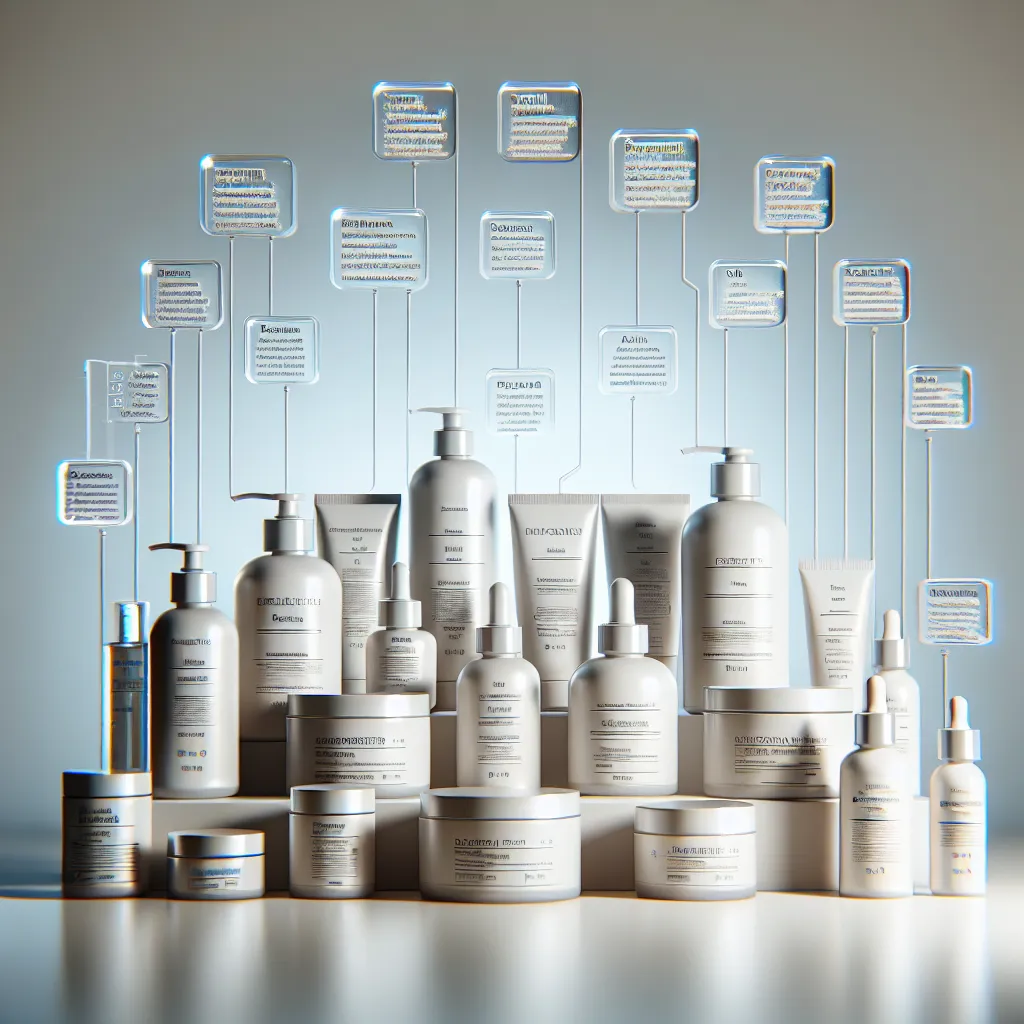The Basics of Cosmetic Chemistry: Understanding Ingredients
The Basics of Cosmetic Chemistry: Understanding Ingredients
When it comes to choosing the right skincare and makeup sets, understanding cosmetic ingredients is crucial. The science behind skincare products involves a deep understanding of the various components that make up these cosmetics. From moisturizers to foundations, each product contains a specific combination of ingredients that serve different purposes.
One of the key aspects of cosmetic chemistry is understanding the function of each ingredient in makeup sets. Whether it’s emollients that provide smoothness and hydration, preservatives that extend the shelf life of the product, or pigments that give color and coverage, every ingredient plays a unique role in the formulation. For those interested in delving deeper into the world of cosmetic chemistry, it’s essential to comprehend the impact of different ingredients on the overall performance and safety of makeup sets.
To explore a wide range of makeup sets that incorporate scientifically-backed cosmetic ingredients, visit makeup sets at our website. Understanding the chemistry behind these products can empower individuals to make informed choices about their skincare and beauty routine.
The Basics of Cosmetic Chemistry: Understanding Ingredients
Understanding the basics of cosmetic chemistry is essential for anyone interested in skincare. Cosmetic ingredients play a crucial role in the efficacy and safety of skincare products. A fundamental grasp of the science behind skincare formulations can empower consumers to make informed choices and understand the functions of different ingredients. Thus, the knowledge of cosmetic chemistry enables individuals to select products tailored to their specific skincare needs.
When delving into cosmetic chemistry, it’s important to comprehend the various types of ingredients used in skincare products. These ingredients can be categorized as active, inactive, or functional. Active ingredients are the compounds responsible for delivering the intended benefits, such as moisturization, anti-aging, or sun protection. Inactive ingredients, on the other hand, encompass preservatives, stabilizers, and pH adjusters, which contribute to the overall formulation’s stability and shelf life. The functional ingredients aid in the application, texture, and overall sensory experience of the product, ensuring that it is pleasant to use.
Furthermore, a deeper understanding of cosmetic chemistry involves recognizing different ingredient classifications such as emollients, humectants, and occlusives. Emollients work by softening and smoothing the skin, whereas humectants attract moisture from the environment into the skin, promoting hydration. Occlusives help to create a barrier on the skin’s surface, reducing water loss and enhancing moisture retention.
In conclusion, comprehending the basics of cosmetic chemistry and understanding the function of ingredients are pivotal in navigating the world of skincare products. With this knowledge, consumers can decipher ingredient labels, assess product claims, and make informed choices about the skincare products they use.
Unveiling the Truth: Deciphering Skincare Labels
Understanding skincare labels can be a daunting task, especially with the myriad of ingredients listed on the back of the product. Deciphering these labels is crucial for making informed decisions about the products we apply to our skin. To unravel the mystery behind skincare labels, it’s essential to grasp the science of cosmetic ingredients.
One of the first things to understand is that ingredients are listed in descending order of concentration. This means that the first few ingredients make up the majority of the product. For instance, if a moisturizer lists water as the first ingredient, followed by various oils and emulsifiers, it indicates that water is the main component, and the following ingredients are present in smaller amounts.
Familiarizing oneself with common skincare ingredients is also beneficial. For example, knowing that hyaluronic acid is a humectant that retains moisture, or that retinol is a derivative of vitamin A with anti-aging properties, empowers consumers to select products tailored to their specific needs.
Furthermore, understanding the difference between active and inactive ingredients is crucial. Active ingredients are the components responsible for producing the intended effect, such as sunscreen agents in sunblock. Inactive ingredients, on the other hand, include preservatives, fragrances, and emulsifiers that enhance the product’s texture and shelf life.
Lastly, being aware of potential allergens and irritants is paramount when decoding skincare labels. Certain ingredients, like fragrance compounds and some preservatives, can trigger adverse reactions in sensitive individuals. By recognizing these components on labels, individuals can avoid products that may cause skin issues.
In conclusion, deciphering skincare labels requires a basic understanding of ingredient concentration, knowledge of common skincare components, differentiation between active and inactive ingredients, and awareness of potential allergens. Armed with this knowledge, consumers can navigate the world of cosmetics with confidence, making well-informed choices for their skincare routines.
The Power of Active Ingredients in Skincare Products
When it comes to skincare products, the power lies in the active ingredients. These are the components responsible for delivering the promised results, whether it’s hydration, anti-aging effects, or blemish reduction. Understanding these active ingredients is crucial for making informed choices about the products we use on our skin.
One of the key players in skincare is retinol, a derivative of vitamin A. It has been praised for its ability to reduce the appearance of fine lines, wrinkles, and uneven skin tone. Another popular active ingredient is hyaluronic acid, known for its exceptional hydrating properties. This molecule can hold up to 1000 times its weight in water, making it a go-to for plumping and moisturizing the skin.
Antioxidants like vitamin C and E are also highly sought-after in skincare. They help protect the skin from environmental damage and can brighten the complexion. On the other hand, exfoliating acids such as glycolic acid and salicylic acid work to remove dead skin cells, unclog pores, and improve overall skin texture.
It’s important to note that the effectiveness of these active ingredients can vary depending on their concentration in the products. Higher concentrations may deliver more potent results but can also increase the risk of skin irritation. Understanding how these active ingredients work and their optimal concentrations for different skin types is essential for achieving the best outcomes.
Ultimately, the power of active ingredients in skincare products cannot be overstated. By delving into the science behind these components, consumers can make educated decisions about which products will best address their specific skincare needs.
Demystifying the Science: How Cosmetics Ingredients Really Work
Demystifying the science behind skincare ingredients is essential for understanding how cosmetics really work. With a myriad of products claiming to provide miraculous results, it can be challenging to decipher the truth behind the marketing buzz. However, by delving into the science of cosmetics ingredients, we can gain valuable insights into their mechanisms of action.
Key to understanding cosmetics ingredients is the comprehension of their specific functions and interactions with the skin. For instance, humectants like hyaluronic acid and glycerin work by attracting and retaining moisture, thus enhancing skin hydration. Similarly, antioxidants such as vitamin C and E combat free radicals, preventing premature aging and promoting skin health.
Furthermore, emollients like jojoba oil and shea butter function by smoothing and softening the skin’s texture, while exfoliants such as alpha hydroxy acids (AHAs) and beta hydroxy acids (BHAs) help to slough off dead skin cells, revealing a brighter complexion. It is crucial to note that the efficacy of these ingredients often depends on their concentration, formulation, and synergistic effects with other components present in the product.
By dissecting the scientific literature and conducting rigorous studies, researchers continuously strive to elucidate the intricate processes by which cosmetics ingredients exert their effects. This knowledge not only aids in debunking myths but also empowers consumers to make informed choices when selecting skincare products. Ultimately, an in-depth understanding of cosmetics ingredients paves the way for the development of innovative formulations that can truly transform and improve skin health.




















